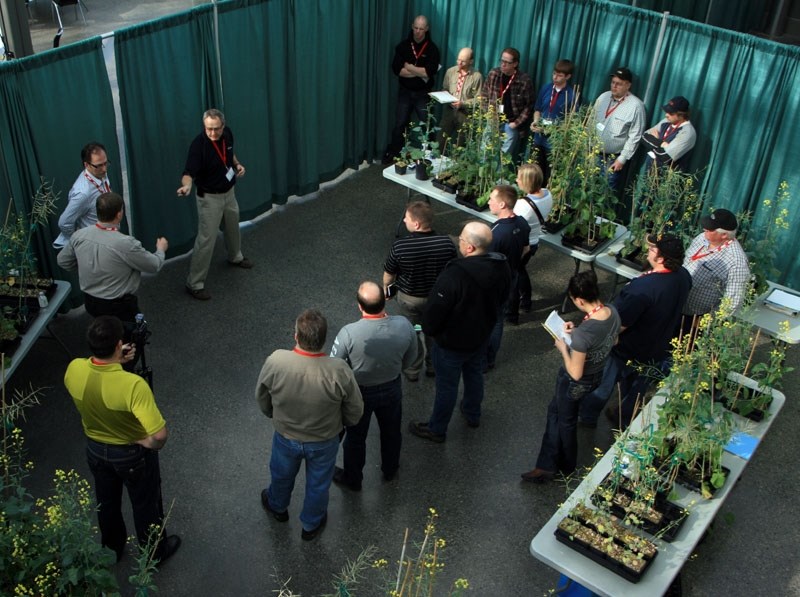Crop pests will be thrown to the entomological lions this week as crop experts come to St. Albert for a science seminar on canola.
About 240 farmers and agronomists are at the Enjoy Centre this week for the second annual CanoLAB educational seminar. Organized by the Alberta Canola Producers Association and the Canola Council of Canada, it’s meant to give people an up-close look at the pests that ravage canola.
Canola is the preeminent crop in Western Canada, says the Enjoy Centre’s Jim Hole, and many of its pests also affect cabbage, broccoli and other garden crops.
Viewing infested plants under natural light in a greenhouse helps farmers to identify these pests in the wild, Hole says. “It’s a great way to ensure the princess crop of the Prairies continues to do well.”
This year’s event sold out in a matter of hours, says Rick Taillieu, extension co-ordinator for the Alberta Canola Producers, like it did last year. These pests have a direct effect on a farm’s profits, he says, so there’s great interest in learning how to spot them.
The daylong sessions will see attendees train with about 30 crop experts to learn how to spot and stop these pests, Taillieu says.
The event features examples of live canola plants infested with various diseases, Taillieu says, as well as the good and bad bugs commonly found on canola. “It’s done in a very controlled way,” he adds, and there’s no risk of the bugs and diseases escaping.
Best of all, you get to be out in your short-sleeves in the middle of winter. “It’s like a holiday,” Taillieu says.
New this year is the science fair, Taillieu continues, featuring exhibits on the latest in canola research.
Returning is local agronomist Dan Orchard and his Ring of Death, where multiple insects battle inside a televised ring. “We show the carnage that takes place in your soil without you knowing.”
This is part of the exhibit on bug identification, Orchard explains: they put a beneficial bug in an arena with a pest, such as an aphid, and you get to see the former eat the latter. They’ll also have some parasitic wasps that will lay their eggs inside worms – the young later burst out of them Alien-style.
Bugs and diseases are often closely linked in canola. About 20 per cent of Alberta’s canola was hit by aster yellows disease last year, Orchard says as an example – a phytoplasma carried by six-spotted leafhoppers that blow in from Texas.
“The canola plant becomes hormonally messed-up,” he continues, and grows unusually green and tall. Some develop deformed bladders filled with random plant parts.
But the majority show no symptoms at all, he says: for every infested plant you spot, there’s probably two more that you don’t. This disease tends to overwinter in weeds in years after an outbreak, he notes, so farmers can expect more of it this coming crop year.
This winter’s thick snows could be a boon to flea beetle survival, Hole says, referring to the tiny black beetles that eat canola and other garden plants, especially if we have a warm and dry spring. “We’ve had years where we’ve lost entire fields to flea beetles.”
Blackleg is another pest to watch, Orchard says. A fungus that causes the inside of canola stems to blacken, this disease is making a comeback after 10 years, and may catch some farmers off-guard.
CanoLAB runs this Wednesday and Thursday at the Enjoy Centre. Visit canolacouncil.org for details.




